The Tudors in Lincolnshire
During the Tudor period Lincolnshire was one of the most isolated counties in England. Henry VIII famously referred to its inhabitants as “the commons of one shire and that one of the most brute and beastly of the whole realm”.
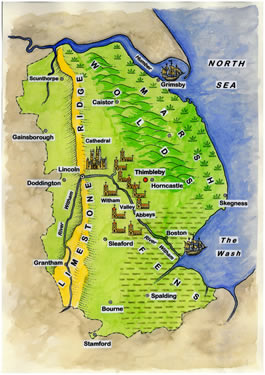
Key Stage 2 and 3 History Resources
These resources and activities have been produced by Heritage Lincolnshire working in partnership with Lincolnshire County Council’s Historic Environment team, and with the assistance of The Collection in Lincoln and Caistor Yarborough School. The project was funded by a Renaissance East Midlands MuBu grant and Lincolnshire County Council.
![]()
![]()
Each resource consists of an interactive activity and supporting downloadable resources. Although the activities have been designed to be used at Key Stages 2 and 3 they will also be of interest to anyone who wants to find out a little more about what life was like in 16th century Lincolnshire, about the political, religious and social changes that were taking place at that time, and about how these national changes were played out at the local level.
Thimbleby: A Tudor Village
We have based our Tudor village on the present day Lincolnshire village of Thimbleby. Thimbleby originated in the late Anglo-Saxon period. Its name most probably means Thymli’s farmstead or village (from the Old Norse personal name ‘Thymli’ and the Danish word ‘by’ meaning farmstead or village). In 1563 there were 40 households there.
Thimbleby still has many surviving traditional Lincolnshire mud and stud cottages although there is no manor house there today. Thimbleby’s present church, St Margaret’s, was built in 1744. It replaced a medieval church which stood on the same site.
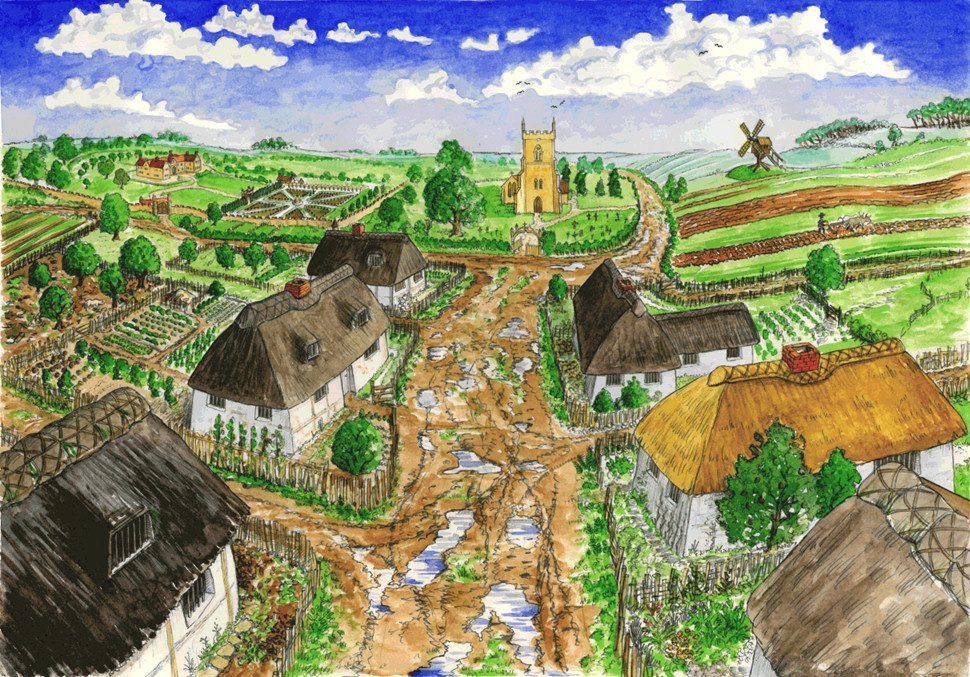
Tour the village
From the present day street scene you can travel back in time to the late Tudor period and see what the village may have looked like 400 years ago.
Explore the village and its surroundings, meet some of the people who lived there, find out how a typical Lincolnshire mud and stud cottage was constructed, see inside a cottage and find out about how ordinary Tudor people lived.
You can go inside the medieval church and discover how it was changed by the Reformation, and you can visit the manor house to see how rich people’s houses were furnished.
Supporting resources and teacher notes
Tudor-Lincolnshire-Thimbleby-HER-ReportTudor-Lincolnshire-Thimbleby-Teachers-Notes-Life-in-Tudor-Lincolnshire
Tudor-Lincolnshire-Thimbleby-Teachers-Notes-Tudor-Houses-in-Lincolnshire
Tudor-Lincolnshire-HenryVIII-Teachers-Notes-Parish-Churches
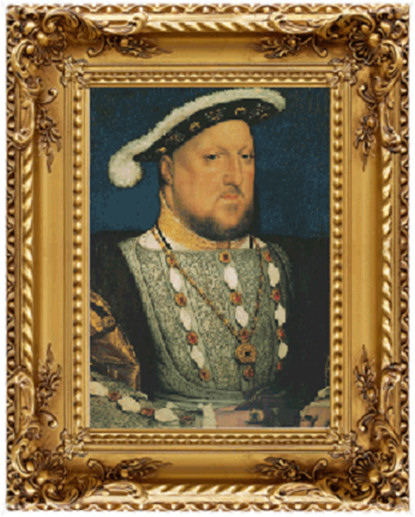
Henry VIII and the Reformation
This activity can be used to generate and support classroom discussion about Henry VIII and the Reformation. It looks at the dilemmas faced by Henry, his break with Rome, his divorce from Catherine of Aragon and his closure of the monasteries.
It also deals with the impact of the changes on different people and on the monasteries using Tupholme Abbey in Lincolnshire as a case study, with links to our Magic Studio Tupholme Abbey time line and Tupholme Abbey education pack.
Supporting resources
The activity is supported by teachers’ notes covering Henry VIII’s marriage to Catherine of Aragon, his break with Rome, the importance of religion, his financial problems, the Dissolution of the monasteries and how this affected the Lincolnshire abbeys of the Witham Valley, the Pilgrimage of Grace and the Lincolnshire Rising and its aftermath:
Tudor-Lincolnshire-HenryVIII-Teachers-Notes-ReformationTudor-Lincolnshire-HenryVIII-Teachers-Notes-Parish-Churches
Tudor Artefacts
This activity is available as a Powerpoint Presentation. The Tudor artefacts are objects that have all been discovered in Lincolnshire.
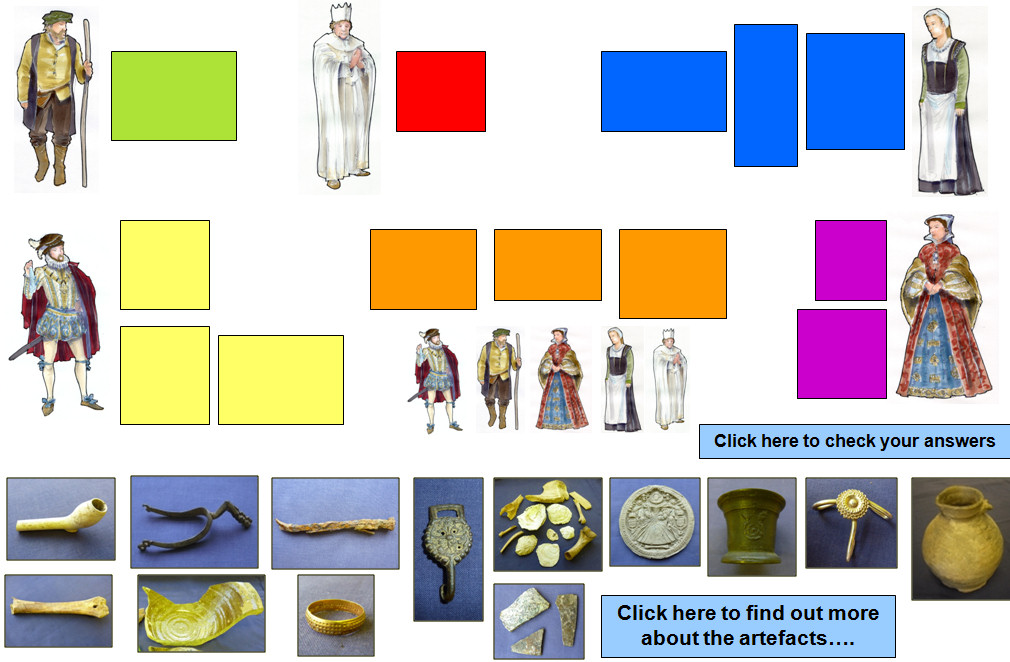
Many of them are in the care of The Collection at Lincoln. Teachers’ notes are available to help you identify and find out more about them. Hint: You might be able to find some of the Tudor artefacts in the Thimbleby Tudor village activity.
What to do
The artefacts are all arranged along the bottom of the screen. Look at each object and try to work out what it is and who might have used it – the rich man or woman, the ordinary man or woman, or the priest. Click on an artefact and move it to its owner – you will need to click the object and then click the person.
Tudor-Lincolnshire-Artefacts-Teachers-Notes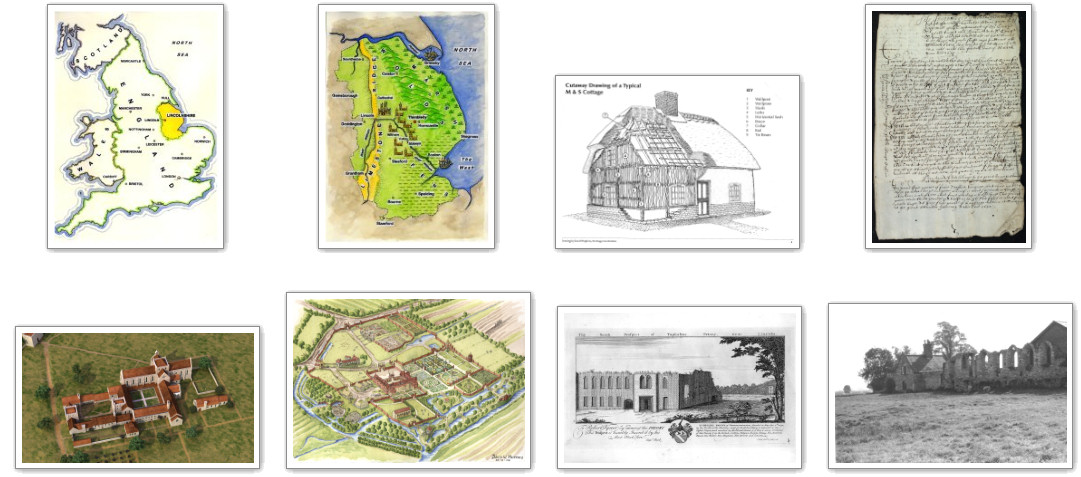
Tupholme Abbey Timeline
The timeline explores the history of Tupholme Abbey from its foundation in about 1160 to the present day.
The timeline is designed to be used on an interactive whiteboard in the classroom. If you are viewing it on your computer screen you may wish to download larger versions of the images to study them in detail. Clicking on the various dates brings up information and images about the Abbey site at different points in its history.
Includes:
- Computer- generated reconstructions of Tupholme Abbey
- Artist’s impression of Tupholme Abbey after the Reformation when it had been converted into a Tudor mansion
- Buck’s engraving of Tupholme 1726
- Annotated earthworks survey
- Aerial photographs
Within the timeline there is a link to our computer-generated reconstructions of Tupholme Abbey. If you want to find out more about the history and archaeology of the abbey site we have also produced a Tupholme Abbey education pack and a booklet. Together the resources can be used to support a range of work across the curriculum and at all key stages.
Tudor-Lincolnshire-Thimbleby-Teachers-Notes-Tudor-Houses-in-Lincolnshire